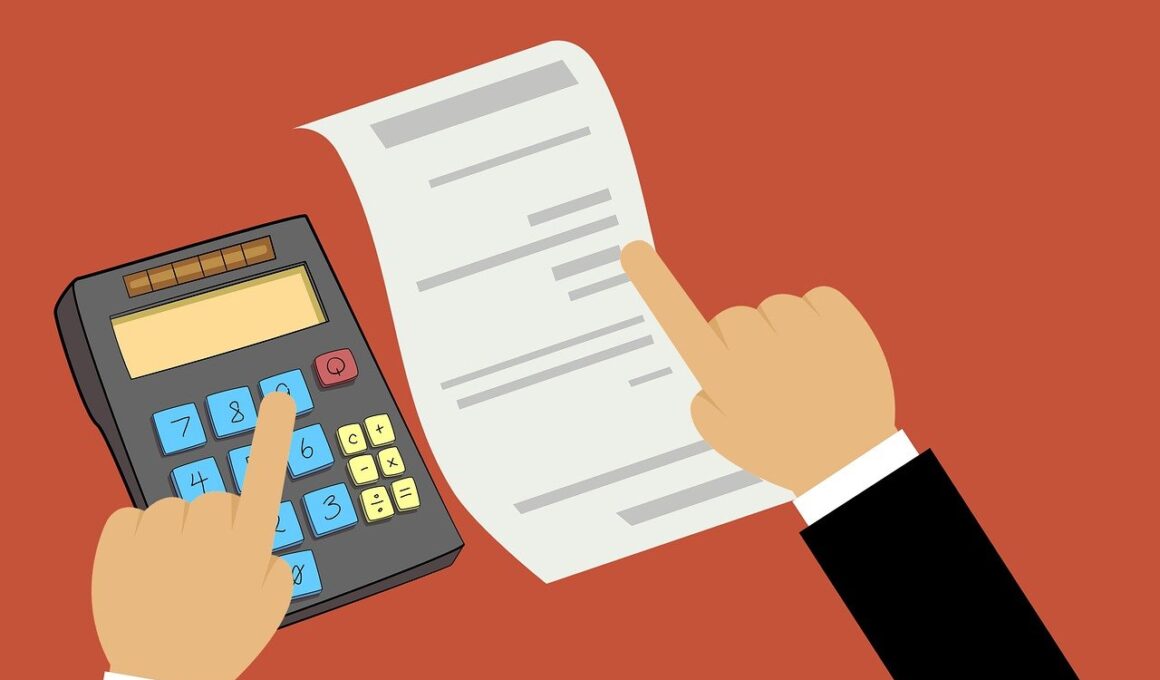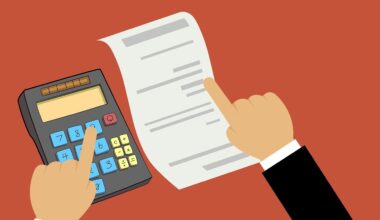Understanding Cost Behavior: A Comprehensive Guide
Cost behavior analysis is an essential aspect of accounting that helps businesses understand how costs change in response to varying levels of activity. By identifying fixed, variable, and mixed costs, companies can make informed decisions regarding budgeting and forecasting. Fixed costs remain constant regardless of activity level, such as rent or salaries. In contrast, variable costs fluctuate with production levels, like raw materials or direct labor. Mixed costs contain both fixed and variable components, which can complicate this analysis. Understanding these behaviors is crucial for effective resource management and cost control. Decision-making benefits significantly when businesses distinguish between these cost types. Companies can optimize their profitability by analyzing how costs react to changes in activity levels. Such analysis facilitates better pricing strategies and strategic planning. Additionally, understanding cost behavior can assist managers in identifying potential cost-saving opportunities. The emphasis on cost management has grown; thus, mastering these concepts is vital for any aspiring accountant or business leader. By leveraging cost behavior analysis, companies can adapt and thrive in an ever-changing economic landscape, gaining insights that drive efficiency and improved financial performance.
Fixed and Variable Costs
Fixed costs are expenses that do not vary with production output, which means they remain constant over a defined period. These costs encompass rents, salaries, and certain utilities, contributing predictably to total expenses. Conversely, variable costs change directly with production levels, increasing as output rises and decreasing as output falls. Examples include material costs and wage costs for hourly workers. Knowing the nature of these costs helps assess profitability and determine product pricing strategies. For effective budgeting, companies must account for both fixed and variable costs, allowing for accurate forecasting of financial performance. Analyzing cost behavior creates a more thorough understanding of how different expenses impact overall business operations. Companies should develop a high-level overview of cost behavior across numerous activities to address potential fluctuations. Identifying fixed and variable costs aids in break-even analysis, helping businesses understand the volume needed to cover expenses. Furthermore, knowing how mix costs contribute facilitates managerial decision-making when planning capacity and scaling operations. The overall goal of analyzing cost behavior is to enhance financial performance by generating insights on how costs evolve with changing business activity.
Understanding mixed costs is critical in cost behavior analysis. Mixed costs contain both fixed and variable components, presenting unique challenges for budgeting and analysis. For instance, a company may pay a base salary (fixed) plus a commission (variable) based on sales performance. Such complexity requires careful analysis to determine how much of each cost component contributes to total expenses. The key to analyzing mixed costs involves separating the two components through techniques such as high-low method or regression analysis. The high-low method utilizes the highest and lowest levels of activity to pinpoint fixed and variable cost elements. Alternatively, regression analysis employs statistical techniques to discern patterns and relationships in cost data. Deploying these methods enables businesses to precisely calculate total costs and make better operational decisions. A deeper understanding of mixed costs influences operational performance and enhances the accuracy of expense forecasts. By dissecting mixed costs, organizations can adjust their strategies to control overall expenses better. Effective management of mixed costs contributes to improved profitability, ensuring that companies maintain successful and sustainable operations in the long run.
The Role of Cost Behavior in Decision Making
Analyzing cost behavior is vital in facilitating strategic business decision-making. When managers understand how costs fluctuate with production and sales, they can create effective financial plans and budgets. This insight aids firms in determining price points and evaluating product(s) profitability. Additionally, it influences decisions regarding outsourcing, equipment purchases, and labor expansions. For instance, when a company anticipates increased production, recognizing which costs are fixed and variable can inform management’s approach to scaling operations seamlessly. Also, knowing the break-even point allows businesses to set realistic sales targets, as understanding fixed and variable costs will enable informed estimations of required revenue to cover expenses. Integrating cost behavior analysis into planning processes fosters improved foresight, enabling businesses to adapt quickly to market changes. Ultimately, this analytical approach enhances competitiveness and financial stability, as organizations become more adept at navigating complex cost structures. Harnessing the power of cost behavior insights guides firms to make informed, data-driven decisions. This aligns organizational objectives with achievable financial goals, resulting in better business performance and sustainability over time.
Furthermore, the analysis of cost behavior significantly impacts financial forecasting. Predicting future costs necessitates a fundamental understanding of how current costs behave. By examining historical cost behavior patterns, firms can make more accurate projections about future financial scenarios. For example, businesses with predictable sales volumes can utilize that data to anticipate variable costs accurately, making more informed purchasing decisions in advance. Relying on past behaviors helps reduce operational uncertainties when forming budgets or setting long-term financial strategies. By employing both qualitative and quantitative analysis in forecasting, managers can better allocate resources and mitigate risks associated with unexpected cost fluctuations. Additionally, cash flow management directly benefits from understanding cost behavior. Accurate predictions derived from cost analysis can ensure adequate liquidity levels are maintained, averting shortages that jeopardize daily operations. Through informed financial planning, firms are better positioned to capitalize on growth opportunities or navigate downturns without straining resources. In this way, comprehending cost behavior processes adds significant value to organizational management, fostering greater efficiency while allowing firms to respond adeptly to their operational needs.
Challenges in Cost Behavior Analysis
While the principles of cost behavior analysis are foundational to effective management, several challenges can affect its accuracy. First, the difficulty in precisely classifying costs as fixed, variable, or mixed can hinder analyses. Businesses may inadvertently misclassify costs, leading to inaccurate projections and misguided strategies. The variability in costs across different products or services adds to this challenge, as certain costs may behave differently under varying production environments. Moreover, accurately forecasting costs in highly volatile markets poses risks affecting decision-making. Other challenges include external economic conditions, fluctuating raw material prices, and changing consumer behavior that impact cost structures. Thus, organizations must continually reevaluate their cost behavior assessments. Implementing comprehensive data collection and analysis practices is essential for mitigating errors. For practical application, organizations should focus on designing adaptable costing systems that allow for ongoing assessment. Regularly evaluating cost classifications and maintaining up-to-date records contributes to cleaner, more accurate analyses that enhance decision-making. By proactively addressing these challenges, firms position themselves to leverage cost behavior insights effectively, promoting greater success and robustness in operational environments.
Finally, it’s essential for businesses to educate employees about cost behavior analysis. By fostering an understanding of cost structures within teams, all members can engage in proactive financial planning. Training can help employees observe direct links between daily operational activities and their impact on costs. This collective understanding empowers teams to implement processes that actively mitigate unnecessary expenses, fostering a culture of accountability and efficiency. Involving employees in the evaluation of cost behavior allows businesses to tap into diverse perspectives. Diverse insights can reveal inefficiencies previously unnoticed, augmenting the effectiveness of cost management practices. Workshops, training sessions, or online learning resources can significantly increase awareness of cost implications across all organizational levels. Encouraging communication regarding cost considerations can lead to innovative solutions for cost reduction. Furthermore, building this knowledge helps businesses become more resilient in changing economic climates. Companies with an informed workforce can adapt quicker and implement changes to navigate challenges as they arise. Ultimately, investing in education regarding cost behavior analysis forms a strategic advantage, promoting sustainable financial practices that strengthen overall business operations.
In conclusion, mastering cost behavior analysis is imperative for businesses aiming for long-term success. By understanding the principles of fixed, variable, and mixed costs, organizations enhance their ability to forecast financial performance and make informed decisions. The insights gained from analyzing cost behavior not only inform pricing strategies but also align expenditure with production processes. Companies that emphasize cost analysis benefit from greater operational efficiency and improved resource allocation. Moreover, addressing the accompanying challenges in cost behavior and educating employees fosters a culture of meticulous financial management. Such initiatives are crucial for maintaining competitiveness in dynamic markets. Cost behavior analysis serves as a cornerstone of effective business strategy, helping firms navigate complexities while maximizing profitability. Furthermore, as markets evolve, organizations must continually adapt their approaches to cost analysis. Staying ahead of emerging trends in cost management equips businesses to leverage new opportunities effectively. In this pursuit, integrating modern technology and data analysis tools is invaluable for evolving financial practices. Ultimately, companies that embrace the power of cost behavior analysis will be better positioned for sustained growth and success.


